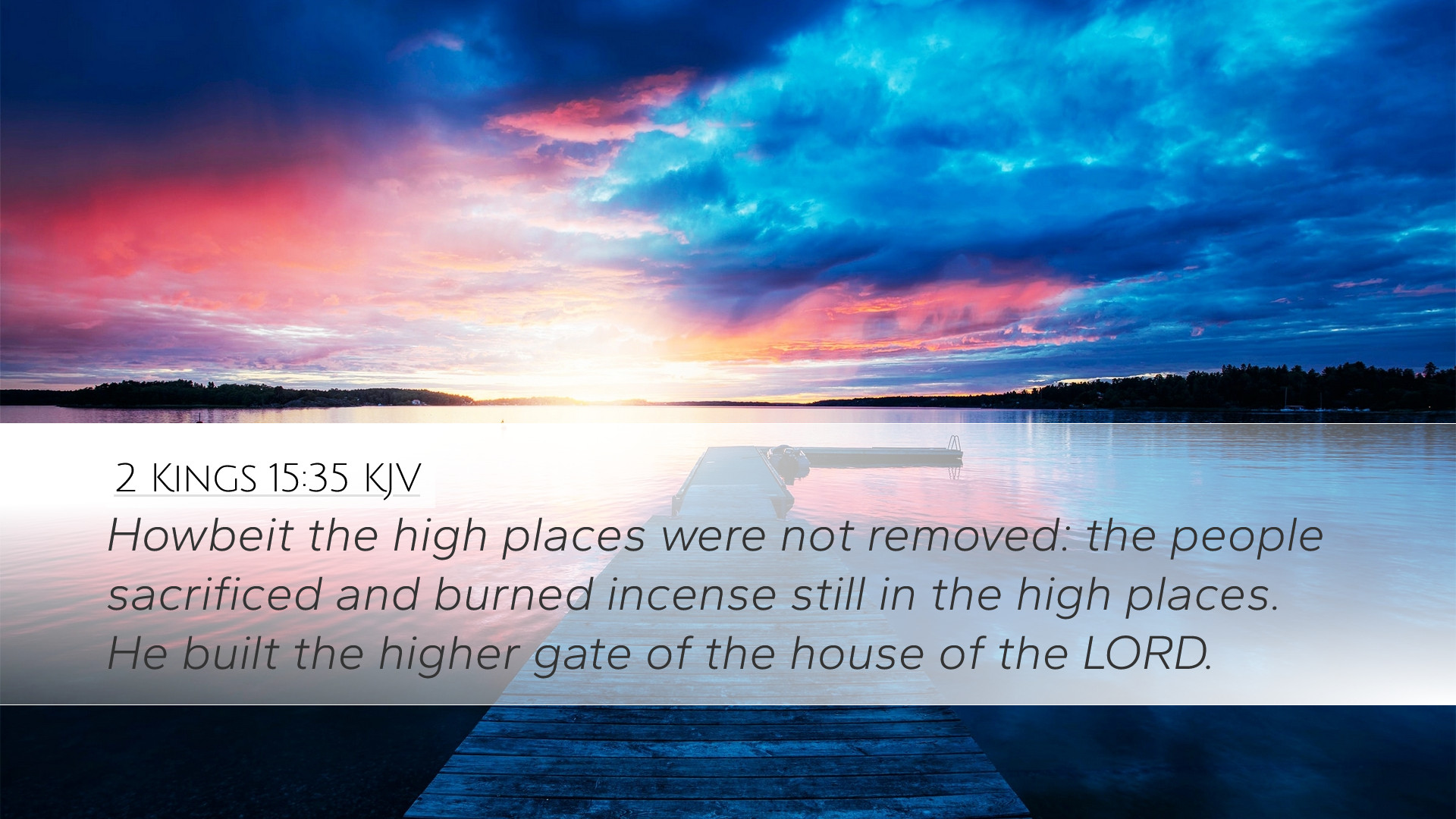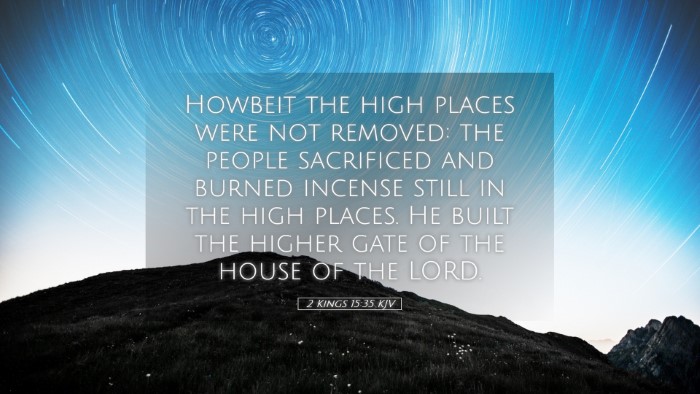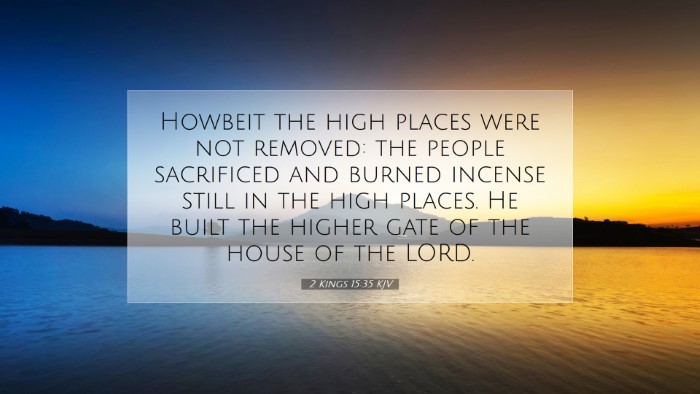Commentary on 2 Kings 15:35
Verse Overview: 2 Kings 15:35 states, "Howbeit the high places were not taken away: the people sacrificed and burned incense still in the high places. He built the upper gate of the house of the LORD." This verse summarizes the reign of Jotham, which demonstrates his efforts towards reform, yet highlights the persisting issue of idol worship in high places.
Contextual Analysis
Historical Context: Jotham was the son of Uzziah (also known as Azariah), who had a lengthy and mostly prosperous reign over Judah. While Uzziah was a king who had notably sought to follow the ways of the Lord, the latter part of his reign was marred by pride and consequent judgment from God. Jotham inherited a kingdom that was facing both internal and external challenges, including the influences of neighboring nations and the corruption within Israel.
Theological Reflections
The verse illustrates the ongoing struggle between true worship of Yahweh and the temptation of idolatry. Jotham's construction of the upper gate of the temple signifies a commitment to temple worship, indicative of his earnestness in wanting to serve God rightly. Yet, the retention of the high places for pagan worship points to the difficulty of fully reforming the worship practices of the people.
Insights from Commentators
-
Matthew Henry: Henry notes that while Jotham took significant steps towards restoring the worship of Yahweh, his failure to demolish the high places reveals a critical flaw in his reign. High places symbolize the mixed allegiance of the people, adhering to both Yahweh and surrounding pagan practices. Henry stresses the importance of total devotion to God without compromise.
-
Albert Barnes: Barnes elaborates on the practices occurring at the high places, indicating that despite Jotham's righteous governance, the people's hearts were still inclined toward pagan worship. He suggests that the existence of high places represents a divided heart among the Israelites, which ultimately hinders national purity and true worship.
-
Adam Clarke: Clarke emphasizes the architectural achievements of Jotham, particularly the upper gate of the temple complex. While this act may have been commendable, he ties it back to the broader issue that even a magnificent temple cannot suffice for genuine worship if the people maintain corrupt practices. Clarke warns of the danger in external religiosity that does not translate into true internal change.
Practical Application
This verse invites deep reflection on the nature of true worship in our communities. Like Jotham, modern believers may strive for external righteousness while neglecting internal purity.
Critical Lessons for Leaders:
- Addressing Idolatry: Just as Jotham was called to address the high places, current leaders must confront contemporary idols that distract from the worship of God.
- Comprehensive Reform: Jotham's partial reforms remind us that surface-level changes in church practice are insufficient if underlying issues remain unaddressed.
- Engaged Worship: The importance of engaging the people in worship that is wholly devoted to God cannot be overstated, reflecting a necessity for spiritual renewal and reformation.
Conclusion
2 Kings 15:35 serves as both a historical account and a relevant admonition for believers today. Jotham's priestly initiatives juxtaposed against the continued pagan practices highlight the tension between imperfect obedience and the holiness to which God calls His people. The challenge remains for pastors, students, and scholars to foster an environment where genuine worship, free from the influence of modern high places, can flourish.


